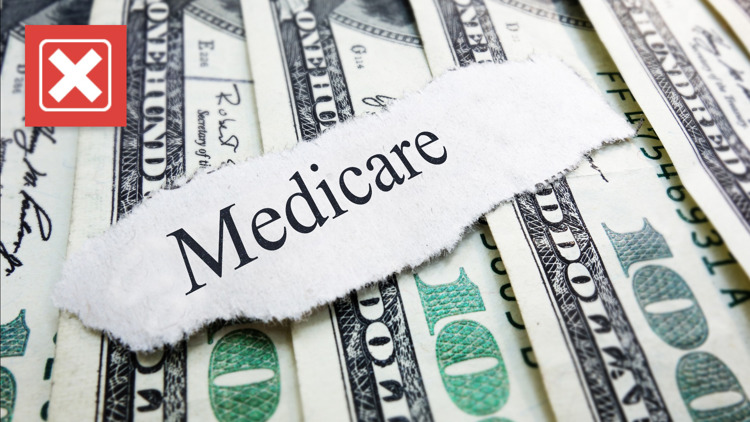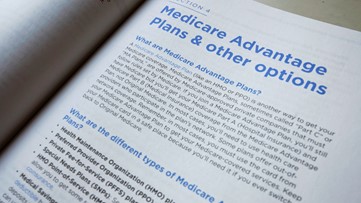The Social Security Administration (SSA) announced on Thursday, Oct. 13 that Social Security recipients will receive an 8.7% cost-of-living increase in their benefits beginning January 2023.
The 2023 cost-of-living adjustment (COLA) is the fourth largest in Social Security’s history. The average recipient’s payment will increase by about $140 a month.
After the announcement, several VERIFY readers wondered if the extra money in their monthly Social Security checks will be eaten up by higher monthly payments, or premiums, for Medicare next year.
“Nice to see the COLA being increased, but will Medicare and MedicareRX rates increase, too? They are always what kills any COLA increase,” readers Ella and Ray H. wrote in an email to VERIFY.
THE QUESTION
Will Medicare premiums increase for most recipients in 2023?
THE SOURCES
- Centers for Medicare and Medicaid Services (CMS)
- Mary Johnson, Social Security and Medicare policy analyst for The Senior Citizens League
- U.S. Department of Health and Human Services (HHS)
THE ANSWER
No, Medicare premiums won’t increase for most recipients in 2023.
The standard Medicare Part B premium is decreasing by about 3%. Federal officials also expect the average premiums for Parts C and D, which are plans offered by private companies, to drop next year.
WHAT WE FOUND
After a historic increase in Medicare Part B premiums in 2022, premiums will decrease for most Medicare recipients next year.
Medicare is federal health insurance for anyone age 65 and older, and some people under 65 with certain disabilities or conditions. It’s made up of four parts: A, B, C and D.
More from VERIFY: No, Congress is not considering $300 billion Medicare cut
Medicare Part A
Medicare Part A, referred to as hospital insurance, helps cover inpatient hospital care, skilled nursing facility care, hospice care and home health care.
Most people aged 65 and older don’t pay a Part A premium. This is because the government charges workers Medicare taxes over the duration of their career and uses the money to cover these costs.
Though most people don’t pay a premium for Medicare Part A, there are still costs they may have to cover. For example, the annual deductible – the amount you pay for covered health care services before your insurance plan starts to pay – for inpatient hospital stays is increasing from $1,566 in 2022 to $1,600 in 2023, the Centers for Medicare and Medicaid Services (CMS) said in a fact sheet published on Sept. 27.
Medicare Part B
Part B, referred to as medical insurance, covers outpatient care, medical equipment such as wheelchairs and walkers, and many preventive services such as screenings, vaccines and yearly “wellness” visits, CMS says.
Though Part B is optional, most people have both Parts A and B, CMS says.
Those who have Medicare Part B pay a premium every month, which is determined every year according to the Social Security Act, according to CMS. That premium is automatically deducted from Social Security recipients’ monthly checks.
Most people pay the standard premium that applies to individuals with an income of up to $97,000 per year and couples with an annual income of no more than $194,000. Some recipients with higher incomes pay more for Medicare Part B.
The standard monthly premium for people with Medicare Part B will be $164.90 in 2023, a decrease of $5.20 from $170.10 in 2022, according to CMS.
“This will mean that most [Social Security] beneficiaries will see more money after the deduction for Medicare premiums,” Johnson said.
The annual deductible for those with Part B is also decreasing by $7 from $233 in 2022 to $226 in 2023.
This comes after it increased by 14.5%, one of the highest jumps in Medicare history, in 2022.
The premium jumped as high as it did in 2022 to cover projected spending for a new Alzheimer’s drug called Adhuhelm, Johnson explained.
When CMS reassessed the 2022 premium, the agency determined it was higher than necessary and is now using the excess funds to reduce the 2023 premium, Johnson said.
More from VERIFY: No, people born in 1960 won’t earn less in Social Security benefits due to a payment formula quirk
Medicare Part C
Medicare Advantage Plans, sometimes called Part C, are plans offered by private companies approved by Medicare, rather than the federal government. The plan will provide your Part A hospital insurance and Part B medical insurance coverage. Most Medicare Advantage plans also include Part D prescription drug coverage. You can read more about how Medicare Advantage plans work here.
More from VERIFY: No, traditional Medicare doesn't include non-medical benefits like grocery cards or gym memberships
Monthly premiums for Medicare Advantage vary based on which plan a person joins and the amount can change every year.
The projected average premium for 2023 is $18 per month, a decline of nearly 8% from the average premium of $19.52 in 2022, according to a news release from the Department of Health and Human Services (HHS). But that doesn’t mean the premium for every policy will decline, since each one is different.
Medicare Part D
Medicare Part D is the optional prescription drug benefit. It’s also offered through private companies approved by Medicare.
Part D premiums vary depending on the plan you have. But CMS did announce in July that the average basic monthly premium for Medicare Part D is projected to decrease by 1.8% from $32.08 in 2022 to $31.50 in 2023.
Again, your premium may rise in 2023, since each policy is different.
Additionally, about 8% of people with Medicare Part D who have an individual income of more than $97,000 or a joint income of over $194,000 will pay more in monthly premiums.
More from VERIFY: No, Medicare is not offering a free flex card













